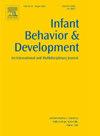Continuity, discontinuity, and atypicality in early language acquisition
IF 2
3区 心理学
Q3 PSYCHOLOGY, DEVELOPMENTAL
引用次数: 0
Abstract
Continuity and discontinuity during the development from infancy to later stages are central themes in developmental psychology. These concepts are particularly important for understanding and supporting language development in children with atypical language development. This review aimed to clarify future research issues on the early language acquisition process up to 36 months of age from the viewpoint of developmental continuity and discontinuity in early language acquisition. Recent studies on early language development support the concepts of both continuity and discontinuity, particularly in the relationship between early gestural development and later language acquisition, as well as in predicting delayed speech in children. However, focusing on 24 months of age, when the development of syntax typically begins, several studies have reported relationships between developmental domains such as gross motor and language. It is necessary to examine continuity and discontinuity in the early language acquisition process from an interdisciplinary perspective. Furthermore, it is important to consider both the speeding up and slowing down aspects of developmental trajectories in early language acquisition. Research on the language acquisition of late bloomers is important from the viewpoint of continuity and discontinuity from the prelinguistic period, domain relevance, and speed in cognitive development.
早期语言习得中的连续性、非连续性和非典型性
从婴儿期到后期发展的连续性和非连续性是发展心理学的中心主题。这些概念对于理解和支持非典型语言发展儿童的语言发展尤为重要。本文旨在从早期语言习得的发育连续性和发育不连续的角度,阐明未来对36月龄前的早期语言习得过程的研究问题。最近关于早期语言发展的研究支持连续性和非连续性的概念,特别是在早期手势发展与后来的语言习得之间的关系,以及预测儿童言语延迟。然而,一些研究关注的是24个月大的婴儿,这是句法发展的典型开始,研究报告了大肌肉运动和语言等发展领域之间的关系。有必要从跨学科的角度来考察早期语言习得过程中的连续性和非连续性。此外,在早期语言习得中,重要的是要考虑到发展轨迹的加速和减缓两个方面。从前语言时期的延续性和非延续性、领域相关性和认知发展速度等方面对大器晚成者的语言习得进行研究具有重要意义。
本文章由计算机程序翻译,如有差异,请以英文原文为准。
求助全文
约1分钟内获得全文
求助全文
来源期刊

Infant Behavior & Development
PSYCHOLOGY, DEVELOPMENTAL-
CiteScore
4.10
自引率
4.80%
发文量
94
期刊介绍:
Infant Behavior & Development publishes empirical (fundamental and clinical), theoretical, methodological and review papers. Brief reports dealing with behavioral development during infancy (up to 3 years) will also be considered. Papers of an inter- and multidisciplinary nature, for example neuroscience, non-linear dynamics and modelling approaches, are particularly encouraged. Areas covered by the journal include cognitive development, emotional development, perception, perception-action coupling, motor development and socialisation.
 求助内容:
求助内容: 应助结果提醒方式:
应助结果提醒方式:


